Introduction
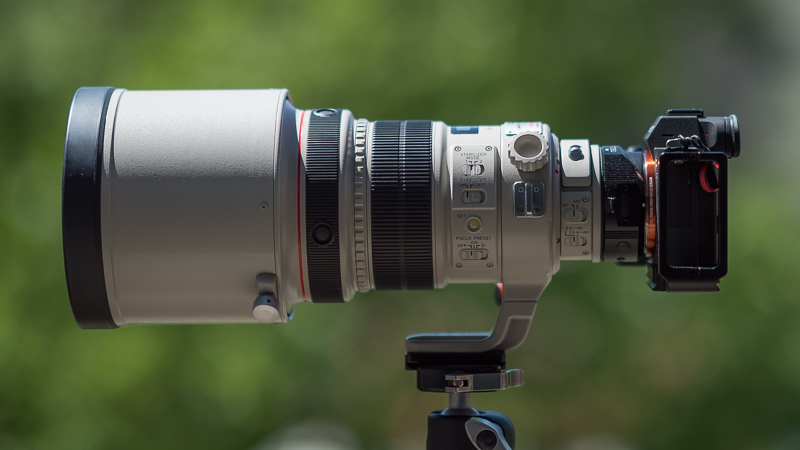
There have always been people adapting lenses to other camera systems, but it was really the release of the Sony A7 that completely changed the game, being the first affordable fullframe mirrorless camera with a short flange focal distance, Liveview and built-in EVF.
This not only made it possible to use long forgotten legacy lenses from decades ago on a modern camera, it also led to some of the most sophisticated adapters we have seen so far.
This was the end of 2014 and since then a lot has changed, so let us see what are the reasons to adapt lenses and in what cases it is still worth it today.
Contents
Reasons for adapting lenses
Desired lenses are not available natively
After the introduction of the fullframe E-mount cameras it took a long time before all the holes in the lineup could be filled (as it now takes a similarly long time for Nikon Z and Canon RF). Even for some of the basic bread and butter lenses customers had to wait several years to be released. What made things worse: some of the earlier lenses weren’t particularly great compared to older and cheaper lenses from the competition.
This drove many people to adapted lenses to fill those holes. A big help here was the early availability of AF adapters for Canon EF lenses that opened up the whole EF world to E-mount users.
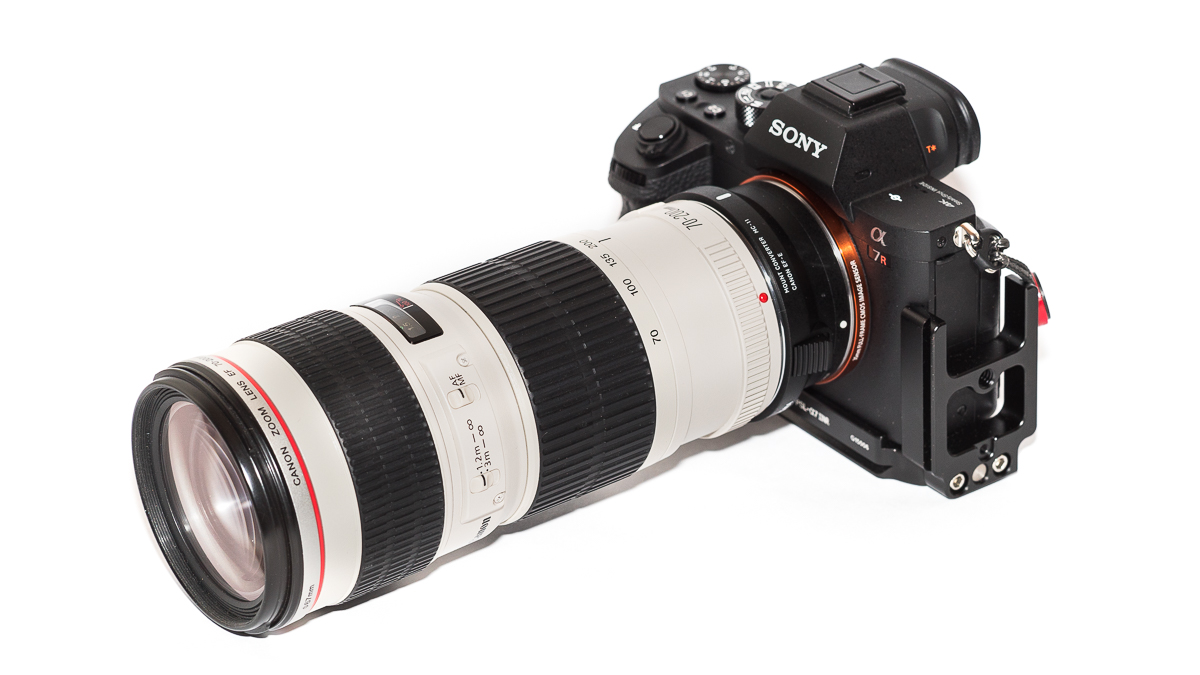
Here the situation changed dramatically over the course of 9 years. The latest E-mount lenses are often the best balanced and highest quality lenses of a certain focal length/maximum aperture combination across all systems. Compared to Z, RF and L-mount we also see the greatest support and investment from third party manufacturers. It is actually hard to find something that is still missing.
So those that felt forced to adapt modern lenses to get the job done because there were gaping holes in the lineup, I am pretty sure they moved on by now and are not really interested in adapting EF lenses or the likes anymore.
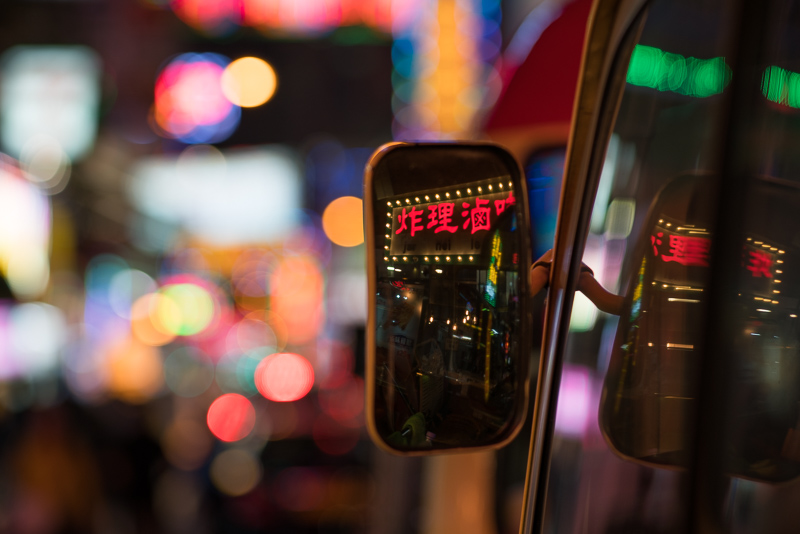
The situation is a bit different when it comes to more exotic or character lenses with a special rendering though, where there is no E-mount version available and in some cases most likely never will be. I am thinking of lenses like the Canon EF 200mm 1.8L, Tilt/Shift lenses or fast legacy lenses that give a certain look hard to achieve with modern lenses.
For me personally also the Sigma 180mm 5.6 Apo Macro and the MS-Optics 135mm 2.4 Aporis are lenses where I doubt we will be seeing comparable native lenses anytime soon (if ever) so looks like I will keep using them on E-mount cameras.
Adapted lenses are cheaper than native ones
When the fullframe E-mount system was still young there was no used market yet, so everyone who wanted a native lens had to buy one of the few available lenses new from dealer at – sometimes outrageously high – MSRP. I am really looking at most of the Zeiss Batis/Loxia, but also early ZA and some G lenses here.

Canon EF 135mm 2.0L + Sigma MC-11 for less than half the price of a Zeiss Batis 135mm 2.8? Sure thing!
At that time also many old manual focus SLR lenses could be found at bargain prices, because they were useless on DSLRs as they could not be adapted to those due to their flange focal distance. Also here the situation changed dramatically. Thanks to blogs like this people figured out which of the old lenses are still useful and in many cases the prices skyrocketed. The craziest example are the fast Canon FD L lenses like the nFD 24mm 1.4L. When I got my first A7 these could be bought for something like 700 bucks, now they sell for 10 times as much – apparently here the filmmakers are to blame though, as they seem to love the rendering of those lenses and have them rehoused to be used for cinematography.
Personally I find it very hard to recommend spending big money on those 40-70 years old lenses. Haze, fungus, balsam separation, sticky/oily aperture blades, failed repair attempts, lack of spare parts coupled with usually no warranty – the risk is high.
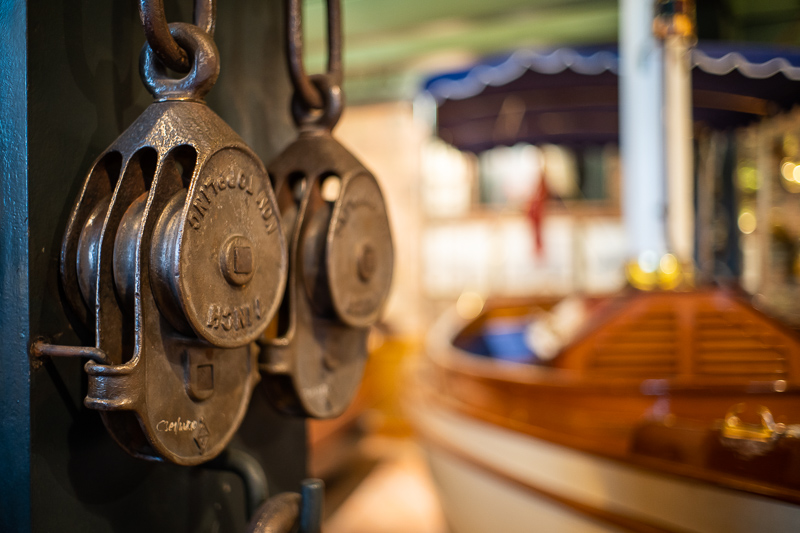
And then there are the new Chinese manufacturers. In many cases their new releases make tracking down a good sample of a comparable legacy lens completely obsolete. You can often get these lenses for less money, new from dealer with warranty.
The TTArtisan 50mm 2.0 FE is smaller than any old SLR 50mm lens with adapter and costs only 64 bucks while offering similar optical performance.
I see very few reasons to prefer something like the Nikon Ai-s 35mm 1.4 over the Pergear 35mm 1.4. The latter can be bought for $129 new while the Nikon commands collector’s prices 5 times as high.
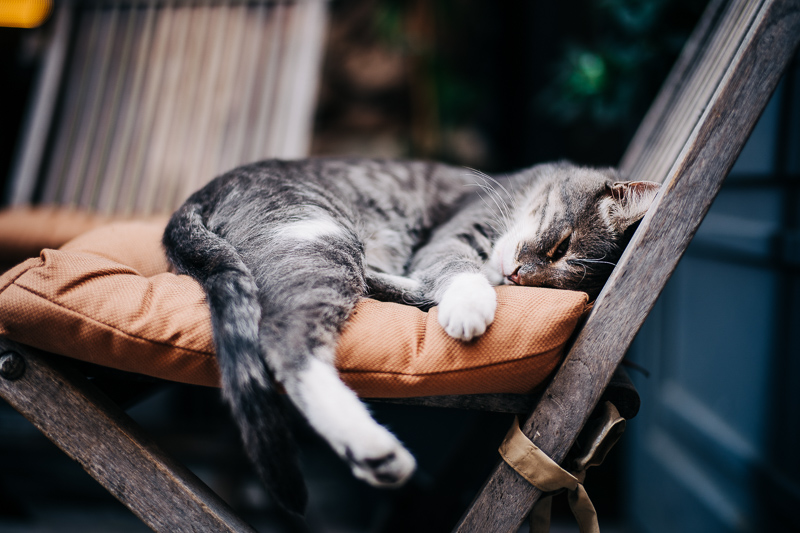
In the early days of FE cameras price was a really good reason to adapt lenses, but I am not really seeing this anymore. We have affordable AF lenses from Samyang and Tamron, very affordable MF lenses from TTArtisan/Pergear/AstrHori/etc., competitively priced high end lenses from Sony themselves – and a healthy second hand market.
You already own lenses from a different system
When the A7 was first released I am pretty sure many customers were already invested in a different camera system before. This is definitely the case for me, having used fullframe Nikon DSLRs before.
Now in the past – more often than not – when a manufacturer created a new mount it was made sure that the old lenses were not usable on those fancy new cameras anymore. Think of the transition from Minolta MD to A or Canon FD to EF mount.
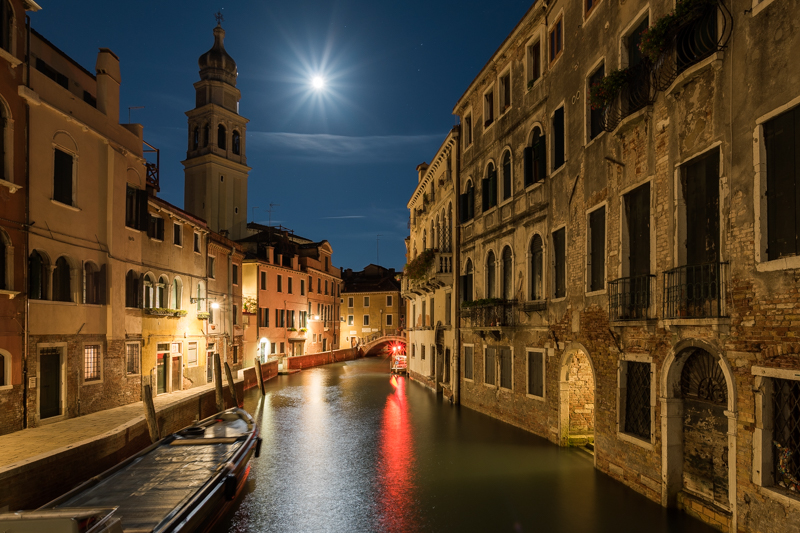
But with the introduction of the fullframe mirrorless cameras the situation was drastically different: not only was it possible to use old Sony A-mount lenses via adapter on those new cameras, it was even possible to use lenses from pretty much any other manufacturer, sometimes even with electronic communication and AF.
This coupled with Canon and Nikon not really being interested in getting into the fullframe mirrorless market early led to a significant stream of Canon/Nikon users getting a Sony camera. These days, I guess most of those that still have a cabinet full of Nikon F or Canon EF lenses are more likely to get one of their own fullframe mirrorless offerings though.
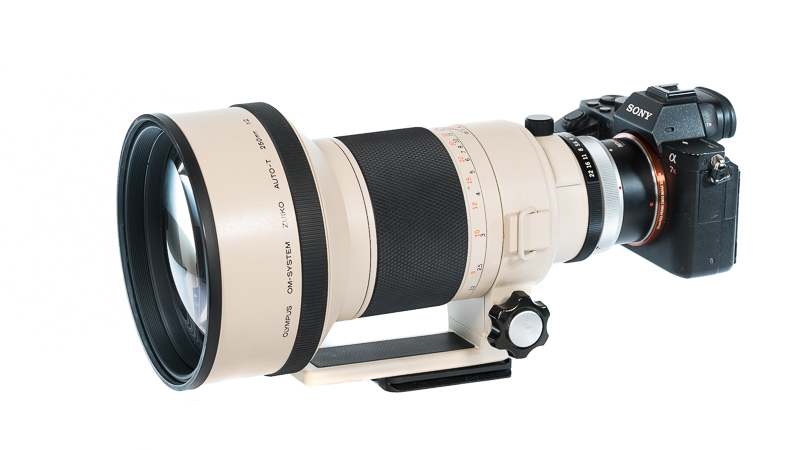
However, if you still have a lens set from a now “dead” mount like Canon FD, Minolta MD, Olympus OM or Leica R (to only name a few) adapting those to any of the modern fullframe mirrorless lenses is still a very good idea to be able to keep enjoying those lenses.
Native cameras are too expensive
This argument is pretty much limited to Leica M-mount cameras but it is still valid today. To me personally the first somewhat well rounded fullframe digital M-mount camera was the M10 (and it still has its issues). The M9 series has no Liveview but a corrosion problem and the M-240 is a bit fat, but even those are still $2000 to $3000 on the used market.
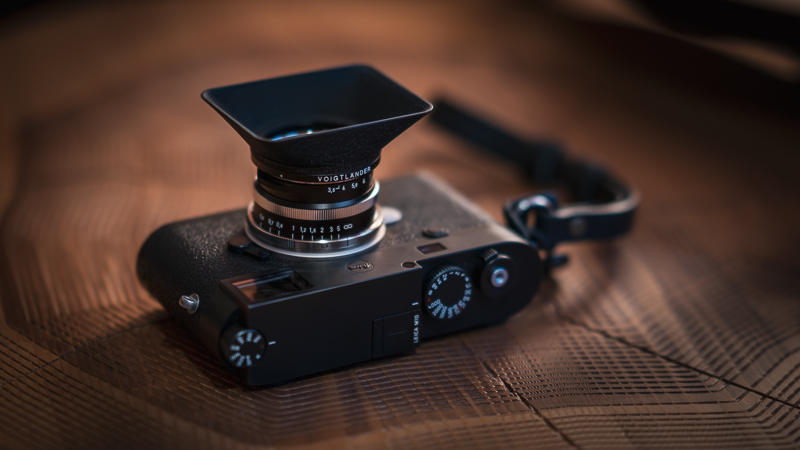
The Leica M camera market is also a bit different from that of Sony/Canon/Nikon. Ignoring the fact that there are way more users of the latter brands to begin with, many of those just sell their old camera on the second hand market when they upgrade to a newer model. With Leica I have the feeling many users rather keep and collect their old cameras to highlight in a showcase. New models are also being released sparsely and we are still (maybe constantly) in a situation similar to that of the early Nikon fullframe DSLR days: the D700 was the only desireable fullframe option for years, so during that time the used prices were more stable than the Great Pyramid of Giza.
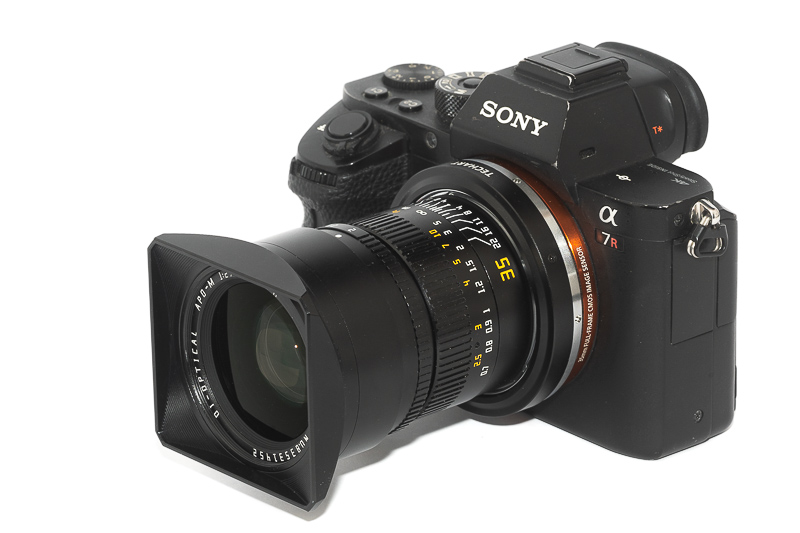
I am sure a Sony A7II with nice built-in EVF and IBIS for $600 used from a dealer with warranty starts to look appealing here. I also often hear of people replacing their rangefinder camera with a modern AF camera because of eyesight issues, so add a Techart LM-EA9 AF adapter to the equation and you can use your beloved M-mount lenses with AF on a Sony or Nikon mirrorless camera.
If you are a regular reader of course you are aware of the limitations when using some of these – especially wide angle – rangefinder lenses on an E or Z-mount camera, but for sub $2000 (read: less than an old M9 and way less than an M10) you can also find Kolari UT modified Gen II or even Gen III A7 series cameras on the used market – or if you happen to live in the US simply have your own camera modified there.
I still see some people doing this (I also do it myself even though I have a Leica M10), but this is of course a niche of a niche kinda thing and only really relevant to those that like the small manual focus rangefinder lenses.
Conclusion
Compared to almost 10 years ago there are less reasons now to adapt lenses and I also think to many people it is less appealing these days, mainly thanks to the great lineup of native lenses we can choose from now.
That being said some very good reasons remain to this day. Compared to the restricted choice of lenses during the DSLR era I personally cherish the ability to adapt lenses from a plethora of different 35mm systems spanning over decades, almost a century even.
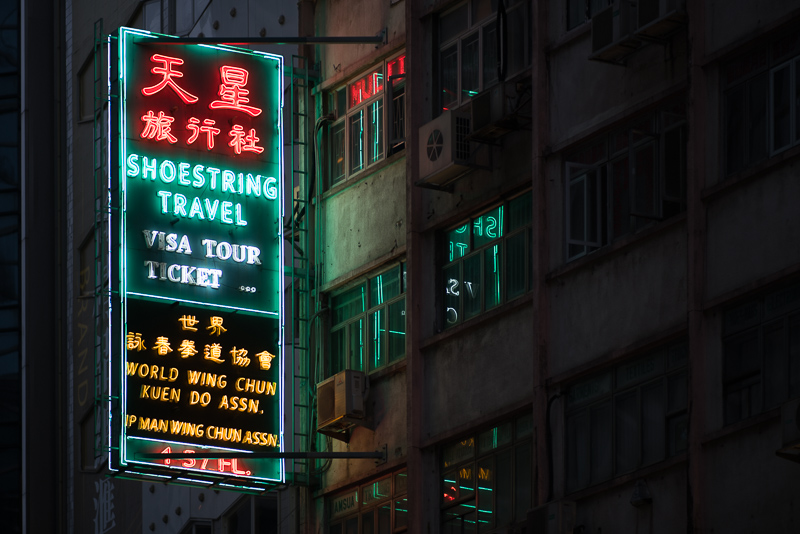
Especially because this gives us the option to bring new life to exotic and interesting lenses from the past that would otherwise end up in some collector’s dry cabinet.
Further Reading
- Guide to Adapters
- More articles like this
- Guide to Sony FE Lenses
- Discuss this article with us on Social Media
Support Us
Did you find this article useful or just liked reading it? Treat us to a coffee!
![]()
![]()
![]() via Paypal
via Paypal
This site contains affiliate links. If you make a purchase using any of the links marked as affiliate links, I may receive a small commission at no additional cost to you. This helps support the creation of future content.
Latest posts by BastianK (see all)
- 2025 – Year in Review - December 23, 2025
- Review: Sony FE 70-200mm 4.0 G Macro OSS II - December 20, 2025
- Review: Viltrox AF 35mm 1.2 FE LAB - December 17, 2025
I feel like adapting is still relevant, but less cost driven. It’s more about the aesthetics and rendering; something which can be very important. My most used adapter lenses are Helios 44, Canon 135L and surprisingly the Jupiter 12.
I’ve cut down in my selection. The Canon FD 300/2.8 was hard to let go, but it’s with a collector/enthousiast now. (reader on this website too!)
I personally feel like adapting will always remain relevant and especially fun for creative expression. I’ll continue to do it for years to come I think.
I love shooting my contax lenses on both: RTS (b/w film) and sony (adapted via Novoflex). For me this is a very good reason to adapt, otherwise I would have to carry a lot more (and often bigger) lenses. Of course there is no good solution for AF or for UWA (below 21mm contax lenses can´t compete with modern alternatives), so I have to use modern lenses from time to time. But still adapting for me is great fun.
This site got me interested in adapting lenses in the first place, and I don’t regret that.
One thing that was already mentioned as a reason to do this is the “character” (read imperfections) of old lenses. For example I really like the glow of undercorrected spherical aberrations.
Another one for me is that focusing manually results in such a different shooting experience; I spend more time thinking about the composition, framing, point of focus etc. – of course AF doesn’t prevent doing that but it’s all too easy to just “fire quickly” with AF. It takes no effort and it’s cheap to quickly snap a picture. Conversely, with MF I have invested a few seconds in correct focus so there’s more incentive to get the rest right as well.
I am of exactly the same opinion and come from the same experience. I have little experience using the analogue cameras and with these adapted lenses I feel like I am touching on that experience. I have shot with many great lenses without much satisfaction. Now that I used old and adapted lenses I drive way more pleasure from the shooting proces.
I still have 2 old lenses: Helios 44-2 and Vivitar Series 1 90mm Macro. Both of those I keep because of the look. The Vivitar is a lot of work, but the look is just amazing. But I only take pictures of the nature. If I need some portrait work I switch to my 85mm Autofocus lens.
My tele is an adapted Canon Lens, which I might sell, but since my father in law is a Canon shooter, the Sigma adapter comes in handy.
But other than that I dont have the need for any more vintage lenses, since there are cheap and well build new ones available.
Think it depends on what you are using them for. I mainly do landscapes and woodland so adapting works out well for me. I just picked up a Nikon 17-35 f2.8 for £150 yeah its bigger and heavier than the Tamron 17-28 f2.8 but second hand that’s going to cost me £550 and at f11 there will be no difference. Also longer focal lengths like the Tokina 400mm f5.6 is a good lens stopped down and can be had for £60 no modern lens compares to that. On a side note if you are doing anything in infrared then vintage lenses are the way to go. Sony lenses are nearly all poor in this respect apart from the Zeiss 55mm 1.8 and the 28mm f2. Tamrons are also not bad but have not tested them myself. If anyone is interested in IR photography and want to see which lenses are good, head over to Edward Noble website he has done some extensive testing for hot spots on many lenses and I have purchased on his results and can confirm his testing methods are excellent.
There is also one more reason, if you shoot both analogue and digital.
I think I started using my grandfather’s Canon AE-1 in 2014 or 2015. I quickly bought a lot of lenses and different camera systems because they were very cheap, for example 25 € for a Praktica MTL with a Pentacon 50/1.8 or 80 € for the Canon nFD 200/2.8. Relatives also gave me their old analogue systems as they no longer used them.
But over time, the disadvantages of film started to annoy me more and more. So I bought a second-hand a7II in 2017 and used it until its untimely death in 2020. The only modern lens I used on it was the Sigma 35/1.4 HSM, everything else was adapted and older than me.
I’ve since sold most of my old lenses, keeping only those with sentimental value. Adapted lenses were a great start to photography for me, but now there are so many modern lenses with better image quality, AF, electronic contacts or better coatings that I can hardly justify the old lenses.
I personally still love adapting to my Sony and I don’t see myself stopping. My Nikon 20mm f1.8G *amazing* and I still prefer it’s rendering over the native sony 20mm 1.8. The AF works very well with the monster adapter. I also just bought a very very excellent nikkor 18-35 f3.5-4.5G which I will be adapting with AF. I got it for $110! That’s amazing. Additionally, I use my Canon nFD 300mm F4L (which I got for less than $300 near mint) for Wildlife. There is not native sony analog. It also renders more beautifully than the Tamron and Sigma super-tele lenses. It’s the rendering + price that keep me adapting. It’s also just a lot of fun to be able to buy a vintage lens for $60 on ebay when you’re bored and sometimes I am surprised by the uniqueness and beauty some of those lenses render (with tradeoffs to be sure). Also, the new techart AF adapter brings adapting anything that is M mount or can be adapted to M mount to a whole new level.
What all Nikon glass do you use that works well with this adapter and how well does the AF perform?
Im one of those that eyesight is an issue for, and I’ve been hesitant to jump on any adapter because of Nikon historically not really adapting well to other systems.
I wont let go of my Nikon glass because i shoot film too, but i’d like to see what it can do with a 61MP sensor
The LA-FE1 works excellently on my Nikon 20mm f1.8G and 18-35 f3.5-4.5G. The latter I had to do a firmware update of my adapter as it didn’t work before the firmware update. There is an online list on monster adapter’s website that says which lenses work and don’t work with their adapter. Given how well it works in the glass I own, I plan to buy a Nikon super-tele lens. The AF for stills works great. The only problem I have with the lens is when I mounted my voigtlander 58mm f1.4 slii, it was nice that I got exif data and would set the aperture to values that are not available with the aperture ring, but there was a problem with the exposure with that particular lens (and not native Nikon glass). It’s kind of hard to explain but photos would be usually overexposed by a stop or two and so I don’t use that lens with the adapter.
I would stick to the lenses in the list, probably to native Nikon glass, and to stills (not video). Otherwise I think it’s great.
Some loosely connected thoughts:
• In my experience, Syoptic 50/1.2 makes it really hard to justify vintage 50/1.2
• Meike 28/2.8 made me sell all my vintage 28s and 24s, as I was using them only on APS-C
• 100mm is pretty much dead for a long time now; if you want one, time for some grave digging
• Tilt is dirt cheap and has a few orders of magnitude more choices with vintage and tilt adapters
I find the RF mount allows for all the exotic and not, EF and EF-S lenses to function 100% on all R cameras. so nothing is missing lens options wise.
Then yes, taking my old M39, R, FL and FD Canon lenses and using them on the new Canon RF mount Canons is a dream.
I’ve already talked Tokina is now making EF-E adapter before. Then, I don’t find reason for using that. But, your post, again, make me think about why I adapt other system lenses to the E-mount camera. My first reason was their price, Canon dominated the market in here, and there were plethora of nice used lenses with cheap price tag. But now, only uniqueness would be the reason I might adapt lenses. E-mount is now mature enough for getting cheap lenses. And lens companies are making not-seen-before lenses like Tamron 35-150 f/2-2.8 or Sigma 35 f/1.2. Someday I hope 200 f/2 grade lenses would come out, but now I am happy with 135 f/1.8 for native performance.
when I first started into E-Mount with a Sony A7 II, all I had was some old Minolta A-Mount lenses, which I adapted with a LA-EA3 (MF only):
20 2.8, 50 1.7, 100 2.8 Macro, 200 2.8 APO G.
After several years and an upgrade to the A7r III, I upgraded my kit to
Sony 24 1.4, Zeiss 50 2.0 Loxia and Zeiss 135 2.8 Batis.
I had several findings:
-I still use the 100 Macro and I won’t replace it. It’s optically good and I don’t use AF for Macro anyway.
– The 200 2.8 can’t be replaced. It’s small, optically good and the handling is a dream. I would love to see a nativ alternative.
– All the other lenses left my kit, since the native lenses are so much better. The 24 1.4 is nearly flawless and a dream to use. It’s my everyday kit-lens. I also love the small, good handling Loxia. And a total suprise is the 135 2.8 Batis. It’s not too big, has a reliable AF and the optical performance is on a level with the best GM lenses. And I’m totally fine with F2.8.
The native options are very expensive and you can achive great results with adapted lenses too. It’s up to your individual preferences, if you adapt lenses or go for the native ones.
Sorry but for me this article is lacking…
Size/weight seems to only get a brief mention. This is very important to a lot of photographers. My m mount lenses that I use on my modded Sony are significantly lighter than their E mount counterparts.
Furthermore there are now some current lenses that you can’t get in e mount – Voigtlanders’ ultron 28/2 and apo 90/2.8. In fact one could argue that Voigtlander is totally behind adapting – it’s on their website…
And how many people do you think are using a modded Sony camera?
Not enough. But weight/ size is a good reason for adapting. I’m not sure what popularity has to do with anything – or we should just discuss camera phones.
I am an amateur photographer so the whole point is fun. I have a couple few AF lenses for when I need to get the shot and a shelf of legacy glass for the rest of the time.
I suspect there are enough photo nerds out there to keep the legacy market alive. The challenge is the collector market pushing the price up on good ones.
Very good points. I’ll add:
1. 42MP+ FF bodies show lens issues more, and that includes the aberrations introduced by having a sensor with a cover glass rather than film. We’re hitting resolutions where designs made explicitly for sensors clearly outperform reuse of film lenses.
2. Modern autofocus has become way better, especially for video, and older lenses simply were not designed for video (e.g., loud and/or slow focusing, focus breathing). There are now also many modern manual focus lenses.
3. The supply of good old lenses is slowly dwindling and thus you’re seeing collector vs. user pricing even for poor lenses. Thus, the real value as user lenses has gone down. Prices for some lenses went insanely high, and some of those have dropped, but the obsolete->collectible transition continues to bump most prices.
4. The modern mirrorless mounts generally do not allow using lenses from one on bodies of another (although Z can take E/FE), so we’re getting back to the “buy the body for the lenses made for it” mentality — the opposite of adapting lenses. People are back to preferring lens and body branding matching thinking it’ll be better even if it isn’t.
I still adapt. I really like the old character lenses! It’s due to money but also the look!
It is like asking if driving a vintage cars is still relevant in 2023…
In the last years adapting vintage lenses get a big technical push since most mirrorless cameras offer IBIS, color peeking and even some AF adapters for manual lenses. So it got even easier to use this old glass.
Size is one main point for me, character and curiosity. Sometimes it is pure personal interest. This could be that I wanted a Leitz lens forever or a radioactive one or one with a concave front element. Maybe I have heard of this legendary lens and am curios what is all the buzz about.
Prices where skyrocketing in the past but I have a feeling that prices are dropping at the moment. Global inflation and fear about it might cause this. Maybe your article will help to decrease prices too. I’m sure that was your evil plan. 😉
Not a lot of comments on the craftsmanship of the photographers. It doesn’t matter whether lens are old or new, manual or autofocus, the lack of skills will not be cured by expensive and fancy new lenses. There are many enviable photos still being taken with legacy lens on digital cameras that leave new “point-and-shoot” equipment users wanting. Dollars don’t make a photographer better, but does indeed offer better chances for good shots. As an octogenarian, I can still use old manual focus Minolta lenses with my Sony A7IV. The results are above those I expected, and see no reason to carry heavier new lens that cost an arm-and-a-leg. However, I can’t help applauding camera makers for offering more than the many quite capable cameras with a phone attached have permeated the mosaic.
Keep up the good work… eh!
Even tho this site and other sources have tempted me to get a number of other lenses to adapt, the only one I currently own is an FD 135/3.5, because the only modern comparable alternative is the Batis and that’s still way more expensive and 250g+ heavier (maybe closer to 200g after accounting for the adapter but it’s also much bigger).
The day someone makes a slower/smaller 135 (or 150mm) for E mount with AF, it’ll kill my use of the nFD 135/3.5 and potentially some of my M4/3 gear too (Oly 75/1.8 in particular which is one of the biggest reasons I still use that system).
I don’t own a native lens for my a7r4. I have around 60 almost all vintage lenses that I adapt through an m mount helicoid. A couple zfs and a newer voigtlander are the exceptions. Lots of vintage glass that renders very differently than modern… It may not be as technically perfect as today’s but having to focus draws me into the shot. That’s how I started in photography.
Also quality vintage glass isn’t plastic and doesn’t feel plastic.
UV-photography!, Expensive specialised lenses with Calcium fluoride and Quartz elements are D-slr models.
Luckily there are many dirt cheap -older- vintage lenses have no multicoating and Trioplan (3 elements/3 group) or Tessar (4/3) designs contain only 3 to 4 lenses.or the 5 elements/5 group designs perform quite nice with relative high transmittance for UV.
Check out Fujinon 55 mm f2.2, Vivitar 135 mm f2.8 (4/4) close up -also nice for Vis and IR) Takumar 35 mm f3,5, 135 f3.5. Meritar 50mm f2,8, Steinheil, and Meyer 50 mm f2.8 trioplan. Nearly all Canons/Minolta’s/Olympus tend to block the whole UV-spectrum. Uncoated doka-lenses perform well especially the older Leica Focotars might be the best also concerning sharpness.
Unexpected good lenses:
There are some exemptions concerning multicoated lenses that performs well, the dirt cheap Nikkor AF-D 50 mm f1.8 and the Nikkor AI/AIS 24 mm f2.8. Nikon E series lenses 28, 35,50, 100 mm perform also well Nikkor S 135 f3.5, 200 mm f4 . Tamron 90 mm f2.5 macro and even Tokina 90mm f2.5 are reasonable above 350 nm.
I agree on the statement that many -manually- focussed vintage lenses have generally less problems with hotspots than many modern lenses. There are lists on internet.
i think adapting the cheap legacy prime lenses is still a grea way of getting to know different focal lengths and learning to use manual focus and aperture control (DoF ).
When i started out a few years ago i had the a7m1 and Canon FD 24mmf2.8/50mmf1.4/135f3.5mm each for 20-50EUR, which is still possible today. Together with the a7 that i got very cheap i had a very capable camera+lens combo for around 500 EUR.
Now i own camera gear worth 10fold of that, but still some of the best photos i took are from that era.
I feel very similar about the good times when I only had a a7i and tokina 17/3.5, Minolta 50/1.8 and 135/28.
Speaking of adapting lenses, idk what Voigtlander is doing designing F-mount lenses in 2023 (lol?) but they are and they announced recently a 55mm f1.2 slii lens for Nikon F mount. It’s a 7 element design. While I would’ve preferred an E-mount design, I’d be happy to adapt this lens. I feel like this is perfectly within your scope of lenses you review so I thought I would mention it.
Designing a 55mm 1.2 for F-mount comes with too many restraints, I don’t see why any mirrorless user would want to adapt that considering we have lenses like the Voigtländer 50mm 1.2 E and Mr. Ding 50mm 1.1 (to only name 2 alternatives).
Hmmm, so do you mean that designing a 55mm 1.2 with that flange distance is going to have optical trade offs it wouldn’t have if it were designed for mirrorless? Or did you mean to say adapting instead of designing? I like the 50mm options but I prefer the 55mm focal length for portraits over 50mm. The F mount 58mm 1.4 renders very beautifully and also quite differently from the Nokton 50mm 1.2 in terms of colors especially. I’m usually quite excited about new voigtlander lenses because I feel like their optical qualities exceed those of their competition and they tend to have a lot of character (the good kind of character). I’ve been hoping for a 55mm ish 1.2 lens for e mount but there really aren’t any options. That’s the reason why the new voigtlander lens is appealing to me.
The main issue is the flange distance in combination with the small F mount diameter.
And that this lens will be double the size with an adapter compared to the native 50mm options.
Just a footnote: Some comments seem to imply that for manual focussing one needs adapted lenses. I guess there is a misunderstanding somewhere: we can use manual focus with modern lenses, too.
Of course manual focussing was no fun with Sony’s first E-mount lenses (the non-linear focus-by-wire implementation sucks), and I have read the same about some of Nikon’s Z-mount lenses. But manual focus has become much better with the GM lenses, and it works like a charm with the modern manual lenses (Zeiss Loxia, Cosina Voigtländer, not to mention all the Laowa, TTArtisans, 7Artisans etc. lenses).
I used Sony A mount lens if they have an HSM (sigma) or SAM (Sony) motor they will auto focus very well with the A73 but the downside is they will not af for video
I HAVE SEVERAL CANON FD LENSES. CAN I get a mount SO THAT I CAN ADAPT THESES LENSES TO MY PENTAX K-3. CAMERA.
No. But you may want to get a new keyboard, seems yours is broken.
For me:
– Unique rendering: I love those Helios swirliness, Canon FD 55/1.2 SSC bokeh bubbles, and unique background of adapted projector lenses
– Cheaper alternative for some special lenses: Canon FD 300/2.8L, Canon FD 200mm macro – pretty hard to find an adequate alternative in native E mount. Also Minolta A-mount 500mm mirror, even with a costly adapter.
– Some compactness, I still love Voigtlander 12/15/21/35 lenses for their size/performance ratio (surely, a bit of compromise in UWA department)
– Lens reusing for digital and film
– Curiosity (as part of gas) 🙂
Re: Canon TV Zoom Lens PV10x15 15-150mm 1:2 No. 240971
I bought this lens with hopes I could adopt it to my canon, T7i. The mount is unfamiliar to me and I am wondering if you have any suggestions to mount it to my camera.
Thank you,
Carol Anne
Would be surprised if it was possible.
I`m waiting for a 2.0/90 macro and 2.0/50 macro. So I have to use my old Olympus OM maual ones. Better image quality than Sony 1.8/85 for portrait/landscape an wider open than the Sony 2.8/90 macro. And two in one. Canon shows how to make it (85mm).
Still love the rendering of many old lenses (Zuiko 21/3.5; 24/2.8; 180 2.8 Tamy; 35 Zeiss; 35 2.0 Zuiko). Not always, but somedays.
Love the Flexibility to switch between Analg and Digital.
Miss small, beautiful lenses for my campact 7C….
So there are reasons
my kids at age 6 have driven me to more native lenses with AF and it has definitely made a difference getting a higher ratio of in focus shots after getting working eye af with the RIV.
Rendering wise, I never go out without my Minolta 58mm f1.2, I get some of my best feeling shots with that lens. I have a lotta great shots with cannon 35mm f2 concave and portraits with Minolta 100mm f2.5. None of them are as sharp as modern lenses but they impart a feeling.
the film thing bit me too, have decent minolta and canon bodies and shoot film with those. I can’t see myself selling most of my minolta /canon collection, while I am slimming down some of the other lenses I just had to have after reading about them here 🙂
I am of exactly the same opinion. I have little experience using the analogue cameras and with these adapted lenses I feel like I am touching on that feeling. I have shot with many great AF lenses without much satisfaction. Now that I used old and adapted lenses I drive way more pleasure from the shooting proces.